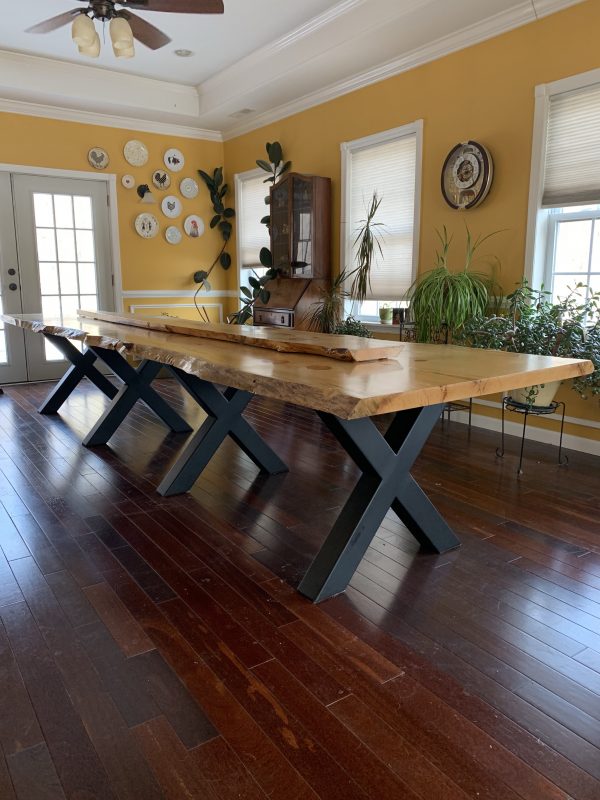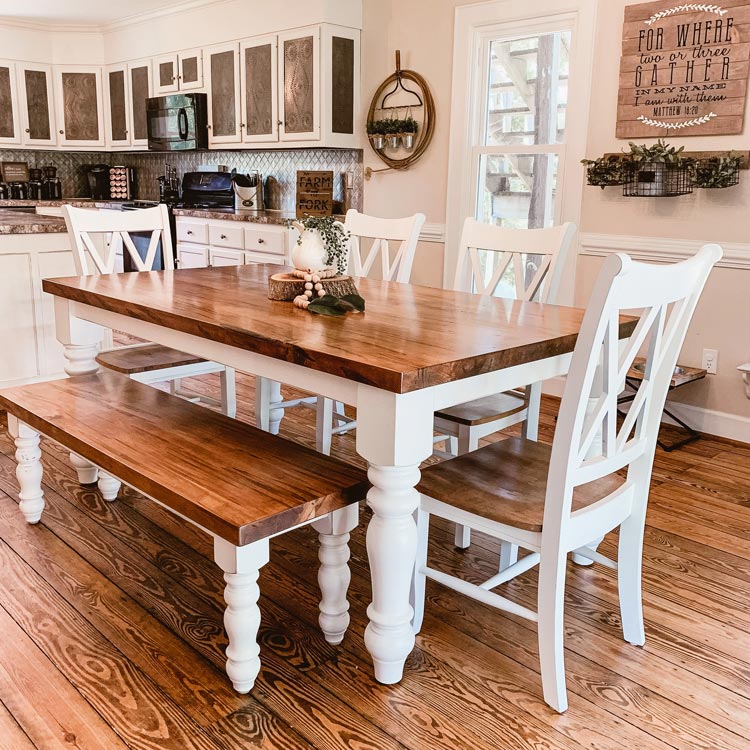Creative Ideas for Replacing or Refurbishing Your Dining Room Table Legs
Creative Ideas for Replacing or Refurbishing Your Dining Room Table Legs
Blog Article
From Traditional to Modern: Locate the Suitable Dining-room Table Legs for Your Style
While classic designs such as cabriole and transformed legs stimulate a feeling of timeless class, modern styles like barrette and geometric alternatives present a chance for striking visual passion. As you consider these aspects, the concern remains: how can you effortlessly incorporate these diverse leg styles to develop a harmonious eating experience?
Understanding Table Leg Styles
The range of dining space table leg designs can substantially affect both the aesthetics and capability of the space. Each leg design adds one-of-a-kind aesthetic components and functional functions, satisfying varied style preferences and usage requirements. Comprehending these styles is important for selecting the right table that aligns with your total interior decoration vision.
For example, conical legs supply a tidy, traditional look that can enhance an area's sophistication, while pedestal bases give security and make the most of legroom, making them optimal for smaller sized spaces. Hairpin legs, a hallmark of mid-century contemporary layout, introduce an industrial flair, enabling an airy, open feel. In a similar way, trestle legs stimulate rustic appeal, offering durable assistance and a sense of eternity.
Wooden legs can bring warmth and appearance, whereas metal choices usually share a smooth, modern vibe. Eventually, recognizing table leg styles is essential for producing a natural eating location that reflects individual design while guaranteeing functionality and convenience.
Conventional Table Leg Options
When selecting dining space table legs, typical options typically embody ageless sophistication and workmanship. These layouts mirror a rich heritage and a dedication to top quality, making them ideal for those that appreciate classic visual appeals.
Among one of the most iconic traditional leg designs is the cabriole leg, identified by its elegant curved form. This layout typically includes ornamental makings and is most frequently located in Queen Anne and Chippendale furniture. One more prominent choice is the turned leg, which boasts a collection of smooth, rounded forms that provide a classic appearance while keeping security.
Furthermore, the straight leg, while simple, offers a sturdy and basic structure that can blend perfectly with a variety of tabletop designs. For those attracted to ornate outlining, claw-and-ball feet legs evoke a sense of majesty and can act as a stunning centerpiece in any kind of eating space.
Last but not least, stand bases, although not purely legs, offer an alternative traditional option that permits for enough legroom and can be magnificently carved. Each of these conventional leg designs adds to the overall setting of an eating room, weding feature with aesthetic allure.

Modern Table Leg Styles
Modern table leg styles provide a varied variety of designs that highlight clean lines and ingenious materials. These designs commonly focus on functionality while working as striking prime focus within an eating space. Minimal aesthetic appeals prevail, with legs crafted from materials such as steel, glass, and engineered wood, which add to a airy and modern feel.
One preferred design is the hairpin leg, identified by its slender, tapered framework that provides stability without frustrating the table top (dining room table legs). This style is commonly located in mid-century contemporary furnishings and can easily enhance various table forms. An additional trend is making use of geometric forms, where legs may take on angular or unbalanced kinds, adding aesthetic interest and a touch of artistry

Blending Designs for One-of-a-kind Rooms
Often, homeowners seek to develop unique dining rooms that show their personal style by mixing various design elements. This strategy permits for the consolidation of diverse appearances, causing an unified yet unique environment. For circumstances, combining a rustic wood table with sleek, contemporary metal legs can develop a distinctive comparison that boosts the area's general appeal.
Additionally, incorporating vintage table legs with contemporary table tops can evoke a feeling of history while maintaining a modern-day sensibility. Such mixes not only display individual taste however also motivate creativity, enabling homeowners to curate a space that really browse around these guys feels both personal and welcoming.
Shade plays a vital role in this mixing procedure; selecting table legs that complement or comparison with the existing color design can improve aesthetic interest. Whitewashed legs can soften the daring of a dark table surface, producing a well balanced aesthetic.
Tips for Picking the Right Legs
Selecting the right table legs is necessary for achieving both performance and visual appeal in your eating room. Begin by considering the general style of your space. Traditional setups take advantage of legs that feature elaborate carvings or transformed designs, while contemporary areas might ask for sleek, minimalist styles.
Following, assess the height and stability of the legs. dining room table legs. Conventional table vary between 28 to 30 inches in height, so make sure the legs match this dimension for convenience. In addition, robust materials, such Web Site as wood or metal, can enhance stability and longevity
Assess the leg form as well-- options include straight, tapered, or pedestal designs. Straight legs provide a timeless appearance, while conical legs can add a touch of sophistication. Pedestal bases supply enough legroom and are optimal for smaller spaces.
Conclusion
In summary, selecting the perfect dining-room table legs calls for careful consideration of both modern and traditional styles. Typical alternatives such as cabriole and transformed legs provide ageless beauty, while modern designs like barrette and geometric shapes offer a modern touch. By harmonizing leg style, elevation, and product with the total decoration, a cohesive and inviting ambience can be accomplished. Ultimately, the selected table legs need to show the desired visual, improving the dining experience within the room.
The selection of dining area table leg styles can dramatically affect both the aesthetics and functionality of the room. Eventually, recognizing table leg styles is crucial for producing a natural dining location that reflects personal design while making sure functionality and comfort.One of the most renowned conventional leg designs is the cabriole leg, identified by its elegant curved shape. Straight legs supply a classic appearance, while conical legs can include a touch of beauty.In recap, picking the optimal eating room table legs needs careful consideration of both modern and standard designs.
Report this page